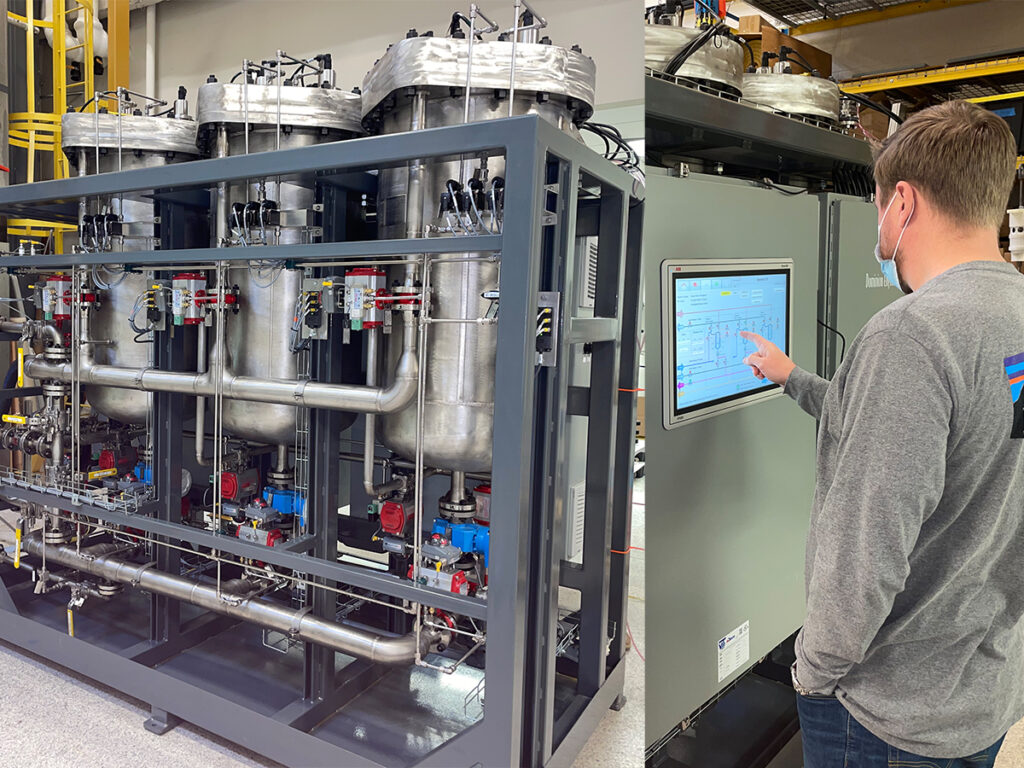SMR Designs Integrate AMFM Technology to Reduce Operational Costs

While the global fleet of existing large nuclear power plants has generally operated with high reliability and efficiency, decades of operational experience with these large reactors provides excellent inspiration for improving the design of advanced reactors, including small modular reactors (SMRs).
One lesson learned from large water-cooled reactors is that filtration and corrosion product management have proved to be more costly and challenging than envisioned at the onset of the commercial nuclear power industry. During reactor operations, corrosion products are generated as component surfaces corrode, and these corrosion products manifest as deposits on fuel and other heat transfer surfaces and can lead to further material degradation, losses in thermal efficiency and other undesirable effects on plant reliability and operation.
Nuclear power plants incorporate filtration and purification systems into their reactor coolant circuits, secondary circuits and fuel pools in order to remove particulate and soluble corrosion products and limit these effects. However, operating experience has shown that these systems are not always sufficient for optimal corrosion product management such that supplemental filtration systems may be needed, especially during refueling outages. Additionally, operational costs and radiological exposure are incurred for workers to access plant-installed filtration vessels, manually replace filters and to dispose of the spent filters as radioactive waste.
DEI’s AMFM filter systems have been used to augment plant-installed filtration systems in large reactors, and address these challenges through the use of a proprietary technology that regenerates the active filters and concentrates previously collected corrosion product particulate. This process occurs automatically and with no human intervention, thus eliminating manual filter changeouts and reducing associated operational costs and radiological exposure. Additionally, uptime for these AMFM filter systems is substantially higher than for traditional systems, while the resulting filter radwaste volume is dramatically reduced, further reducing operational and disposal costs. As an example, large reactors have reported annual savings on the order of $1M/unit through the use of AMFM filtration systems.
Motivated by favorable economics and plant operational experience with supplemental AMFM systems, AMFM technology has been integrated into permanent systems in several large nuclear installations, and is now being integrated into the design of plant-installed filtration systems for several SMR designs in order to reduce operational costs and improve the maintenance and serviceability of these smaller reactors. This includes filtration and corrosion product management in a number of key systems, including the primary reactor coolant circuit, reactor cavity and spent fuel pool. An additional benefit identified during initial engineering studies for these SMR designs is that AMFM systems only require about 30% of the footprint of a traditional filtration system providing an equivalent purification rate. Further, because the filter regeneration process is automated, less infrastructure is needed in the plant design to allow for personnel access for filter removal and replacement. These are major advantages for SMRs as designers seek to make these plants more compact and cost efficient to build and operate.
Continuous improvement based on past performance has always been a hallmark of the nuclear power industry, and a foundation of the nuclear industry’s strong record of safety and performance. It is encouraging to see this principle applied in this example, and we are excited to see the next generation of SMRs come online and enhance the value and capacity of clean, reliable energy already being generated globally by the existing fleet of larger reactors!